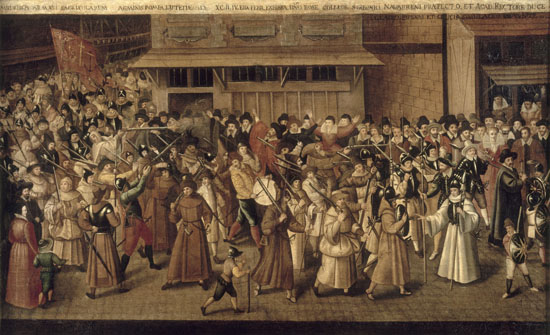Fr : version française / En: english version
From the League to the Fronde
For or against Henry of Navarre? With the wars of religion and the creation of the Holy League, processions began to change, growing more political and taking up arms. The street became a forum for people to promote their views and put on shows of strength, often lapsing into confrontations involving varying degrees of violence.
The steady shift towards absolutism with its string of taxes paved the way for the kind of angry political, social and economic movements embodied by the Fronde.
The Fronde
Fronde (sling) being the name given to the faction, I will give you the etymology of it, which I omitted in the first book (...).
Bachaumont once said, in jest, that the Parliament acted like the schoolboys in the Paris ditches, who fling stones, and run away when they see the constable, but meet again as soon as he turns his back. This was thought a very pretty comparison. It came to be a subject for ballads, and, upon the peace between the King and Parliament, it was revived and applied to those who were not agreed with the Court (...).
We therefore resolved that night to wear hatbands made in the form of a sling, and had a great number of them made ready to be distributed among a parcel of rough fellows, and we wore them ourselves last of all, for it would have looked much like affectation and have spoilt all had we been the first in the mode.
It is inexpressible what influence this trifle had upon the people; their bread, hats, gloves, handkerchiefs, fans, ornaments were all'à la mode de la Fronde', and we ourselves were more in the fashion by this trifle than in reality. And the truth is we had need of all our shifts to support us against the whole royal family (...).
Extract from the Memoirs of Jean François Paule de Condi, Cardinal de Retz (Volume 2)



























